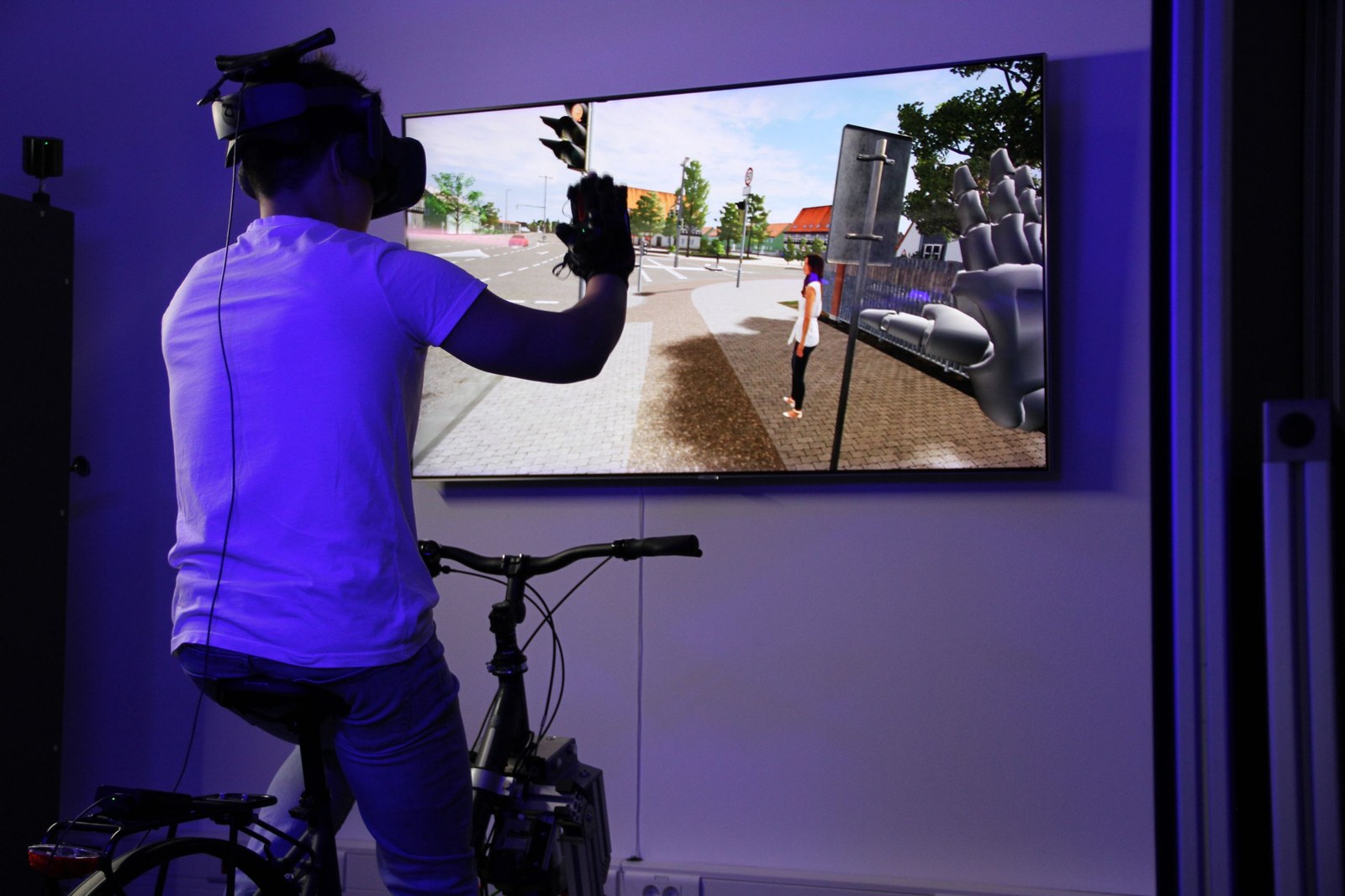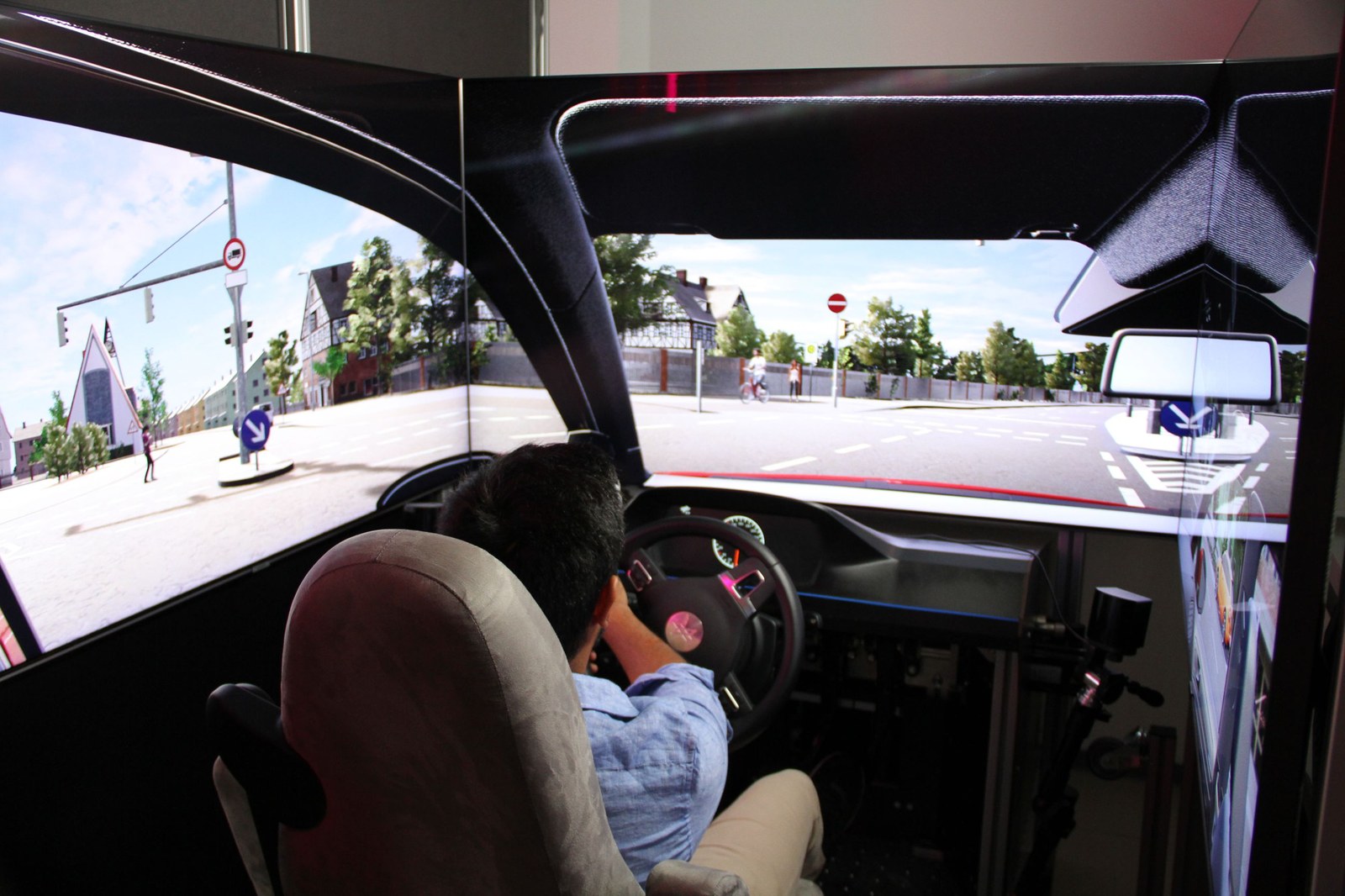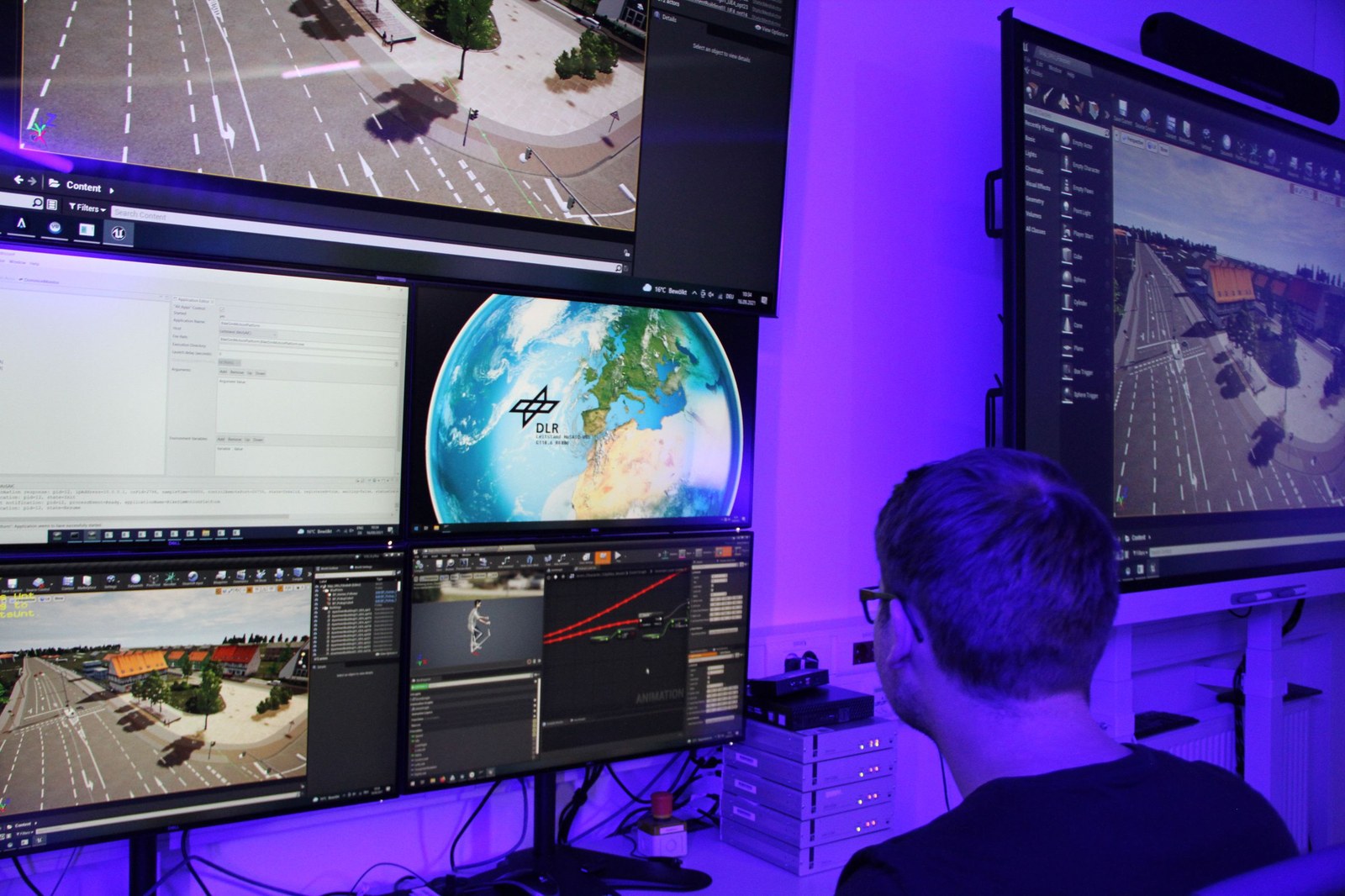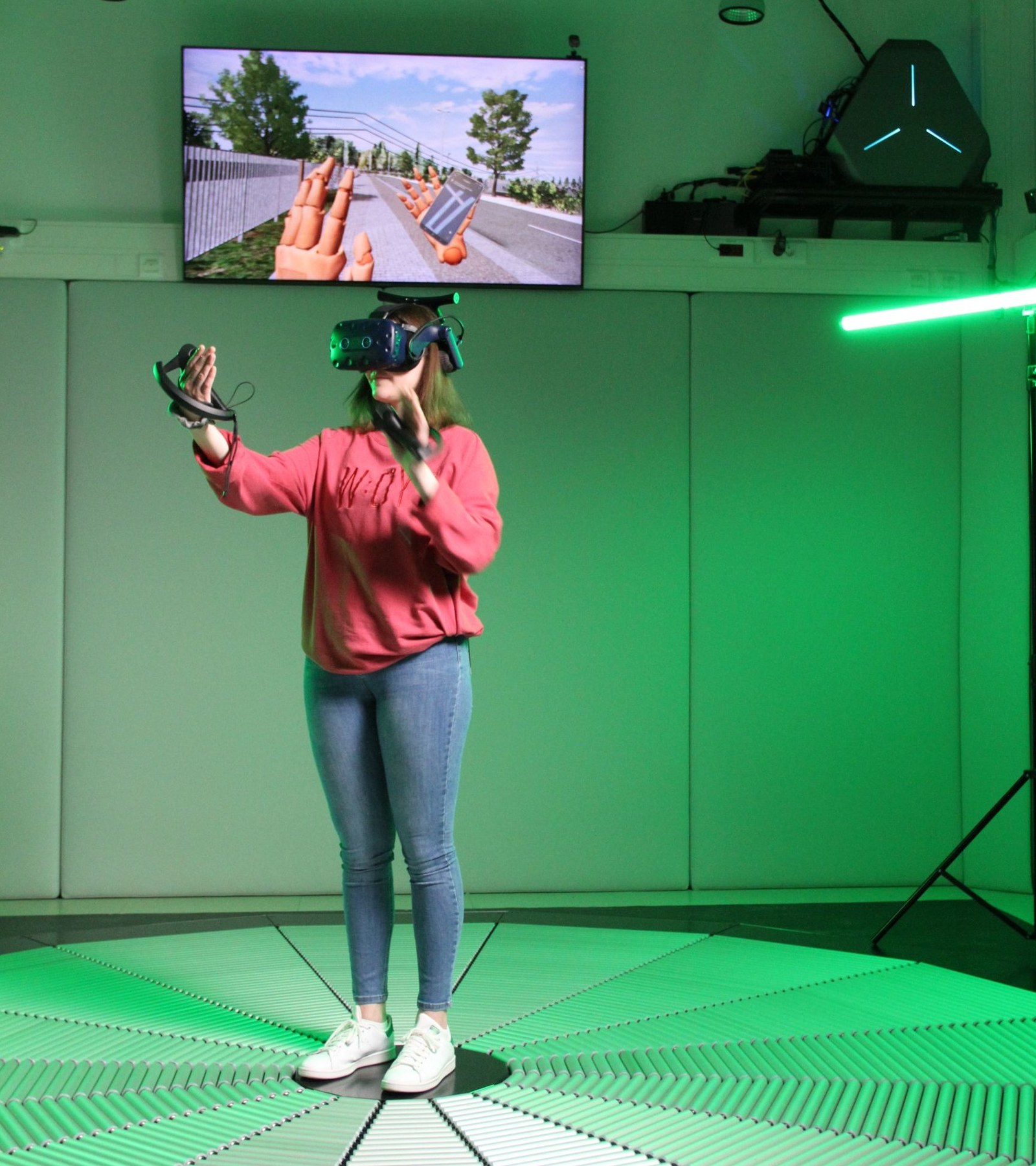MoSAIC
Laboratory for multi-user simulation
The Modular and Scalable Application Platform for ITS components (MoSAIC) offers a laboratory infrastructure that enables multi-user simulation for designing, developing, and evaluating cooperative and conventional driver assistance systems, as well as for investigating cooperation and interaction between road users.



What special features does the MoSAIC multi-user simulation offer?
MoSAIC is a modular, scalable architecture for multi-user simulation. Using this platform, the existing simulators of the DLR Institute of Transportation Systems can be coupled and operated from one control centre. The MoSAIC concept is used for the design, development and evaluation of how traffic participants communicate and interact.
The MoSAIC-VRU-Lab is a laboratory infrastructure specifically designed for multi-user scenarios, in which cooperative assistance functions can be tested in realistic environments, such as the Lower Saxony test field or AIM, prior to their validation. This is particularly important as the individual behaviour of different road users and their interactions continue to play increasingly significant roles in the development of new mobility solutions. Up to two static driving simulators, two pedestrian simulators and a bicycle simulator are available in the MoSAIC-VRU-Lab to assist research on these topics and help answer scientific questions.

Your consent to the storage of data ('cookies') is required for the playback of this video on Youtube.com. You can view and change your current data storage settings at any time under privacy.
How you benefit from MoSAIC
- A large-scale facility that can be used by DLR’s external partners and customers
- Highly detailed simulation enables realistic testing
- Different traffic scenarios in rural and urban areas can be simulated
- Customers and partners can conduct their own tests using MoSAIC and/or benefit from the data that DLR has gathered and processed
Application
MoSAIC enables the following activities:
- Design, development, and evaluation of cooperative driver assistance systems
- Investigation of scenarios with several real road users
- Investigation of socio-psychological behavioural situations between human road users
- Efficient implementation of studies
General and technical data
General data
- Location: Braunschweig, DLR Institute of Transportation Systems
- Equipment: Three coupled simulators operated from a shared control centre
- Commissioning: 2010
- Operation: Year round
Technical specifications
- Test control station with two parallel experimental workstations
- Software: based on
- the DLR Dominion software architecture
- Unreal Engine 4
- Computers: 16 application and visualisation computers in an air-conditioned server room for displaying the virtual landscapes and for simulating assistance systems, six high-end VR computers
- Layout of the driving simulators:
- 160-degree field of view via three front monitors
- 360-degree field of view via virtual reality HMDs
- Digital instrument cluster display
- Two exterior mirrors and digital instrument display
- Additional tablets for secondary tasks
- Active steering wheels (up to 38 Nm haptic feedback)
- Active pedals (up to 28 Nm haptic feedback)
- Additional input devices for interaction with the vehicle (buttons, levers, etc.)
- Communication system for free speech communication between the experimenter and the participants
- Freely adjustable driver's seat with integrated seat belt
- Set-up of the bicycle simulator:
- Resistance trainer for realistic driving experience
- 2-DoF platform for horizontal and vertical movement profiles based on virtual route data
- Interaction of controls, sensors and dynamic models for realistic steering, braking and acceleration behaviour
- Realistic speed perception by means of a driving wind simulator to reduce motion sickness
- 360-degree field of view via Virtual Reality HMDs
- Additional 65-inch front display for visualisation of the driver's view
- Hand representation by means of hand tracking via VR gloves as well as various VR hand controllers
- Setup of the pedestrian simulator Omnideck:
- VR-Treadmill Omnifinity Omnideck with a diameter of 4.7 metres
- Free movement through the simulation with almost natural movements
- 360-degree field of view via Virtual Reality HMDs
- Hand display through hand tracking via VR gloves as well as various VR hand controllers
- Full body tracking (Xsens MVN Link) for complete transmission of user movements to digital avatar

- Setup of the Cyber Shoes pedestrian simulator:
- Simple VR-Treadmill – fixed position on a seat
- Movements are measured using overshoes with rollers (artificial walking movements)
- 360-degree field of view via Virtual Reality HMDs
- Hand display using hand tracking via VR gloves as well as various VR hand controllers
FAQ – Frequently asked questions about MoSAIC
How can tests be booked in MoSAIC?
We make MoSAIC available to external partners and customers for their own tests. If you are interested, please contact us using the contact form at the bottom of the page or send us a booking enquiry.
